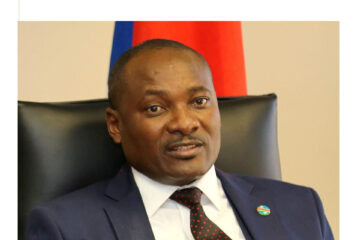Tujoromajo Kasuto
TRANSNAMIB Holdings is auctioning off its non-core properties in nine towns across the country from its properties portfolio valued at N$2,4 billion.
According to Abigail Raubenheimer, the railway company’s Corporate Communications Officer, the properties being auctioned are part of their commercial non-core properties that were approved for sale by Cabinet to raise funds as part of the Integrated Strategic Business Plan (ISBP).
“In 2018 we received the go ahead from the Cabinet, to alienate properties that are not central to business operations. We have quite a big property portfolio and thus we are alienating them to raise funds for our business plan. The company needs to raise a total of N$2.5 billion over the period of five years to support the implementation of the Business Plan and to be able to lift itself from insolvency,’’ said Raubenheimer.
The first phase of auction is slated for next week the 31st of August. In terms of how much they expect to make, she said that only after the auction would they be able to give how much revenue has been made.
Meanwhile, she added that the second phase will be a residential auction of former employee houses which will only be open to staff members.
‘’The exact date for the second phase is not confirmed yet but our employees will get the first option on the residential properties,’’ she said.
This comes as the state-owned railway company received a N$2,6 billion loan from the Development Bank of Namibia (DBN) and Development Bank of Southern Africa (DBSA) in March this year.
The loan is to fund the remanufacturing of rolling stock, acquisition of new rolling stock, modernisation of the TransNamib workshop and upgrading of signalling equipment, including spares and associated equipment.
However, five months down the line Raubenback said the company has not touched the money yet as there ‘’are still administrative matters that must be dealt with before Transnamib can access and utilise the confirmed funding,’’ amid claims that the executives are already dipping their fingers into the money.
Meanwhile, TransNamib’s Chief Executive Officer (CEO) Johny Smith had earlier stated that the company needed two to three years to stabilise revenue and move into a profitable financial position.
According to their business strategy the parastatal must raise income by at least 20% per year.
This development follows as the company finds it challenging to move current freight and acquire new clients due to a lack of locomotives and thus in dire financial position.
As a result, the CEO had lamented that the immediate aim is to try and repair faulty and parked locomotives by obtaining the required spares for them to move additional freight.
Smith lamented that the previous two years have been challenging since the firm has lost a lot of business, which has resulted in a lot of cash flow issues, with a ripple effect on their income because they couldn’t acquire enough funding for replacement of parts.
He said that the rail operator wants to purchase some of these items, and that they are awaiting delivery, which can take up to six months.
Currently, the company intends to reinvest profits in the acquisition of locomotive spare parts to get more freight, so that profits may be reinvested in the acquisition of additional components.
There are currently 24 locomotives operating on a daily basis, 12 of which require repairs, and others which cannot be repaired due to a lack of spare parts.
They have a total of over 70, with some in the yard owing to the same challenges of making them mobile.
Within the following six to twelve months, they want to add another 15 locomotives, Smith
revealed.




